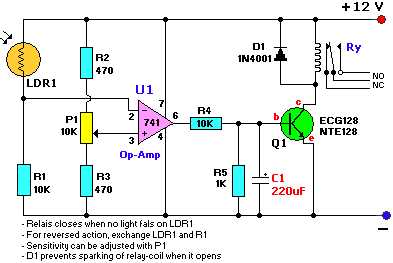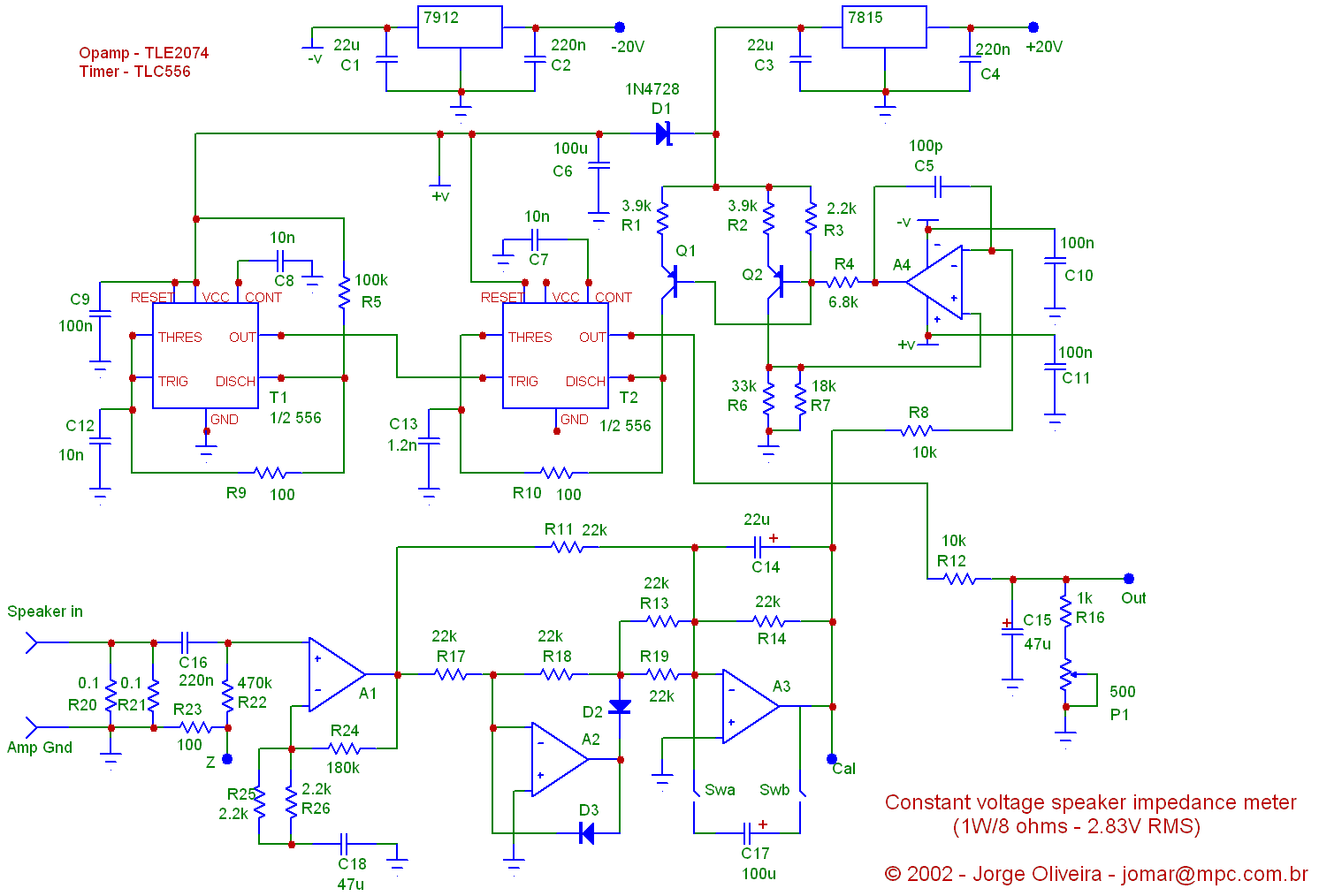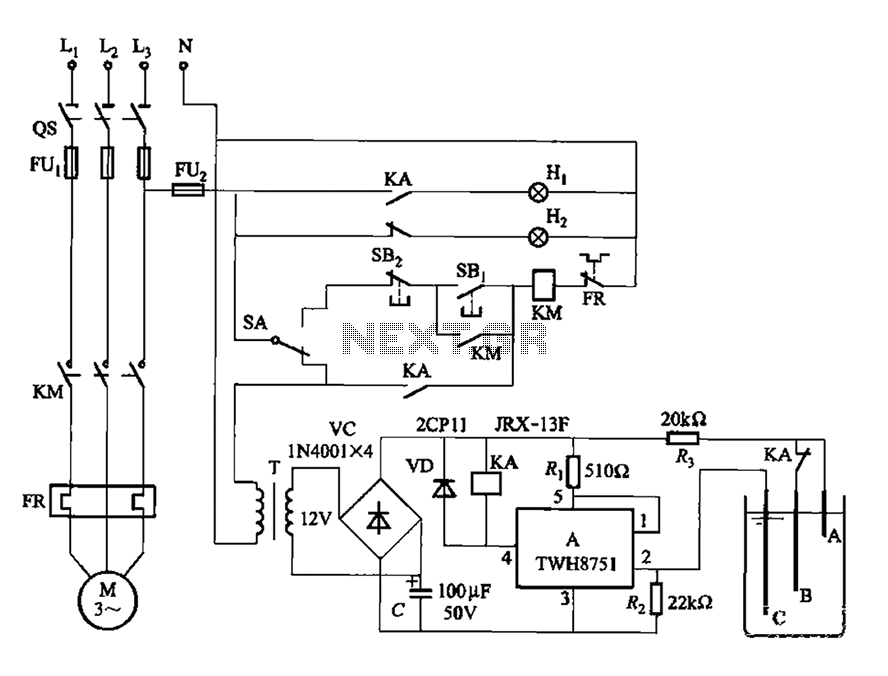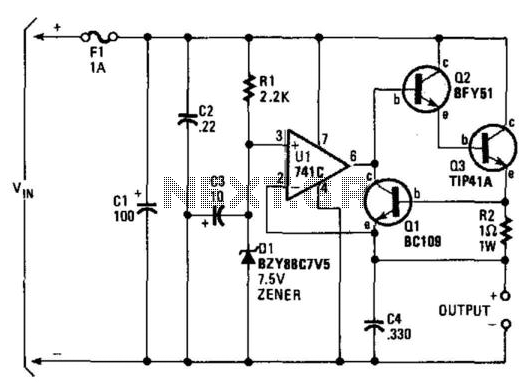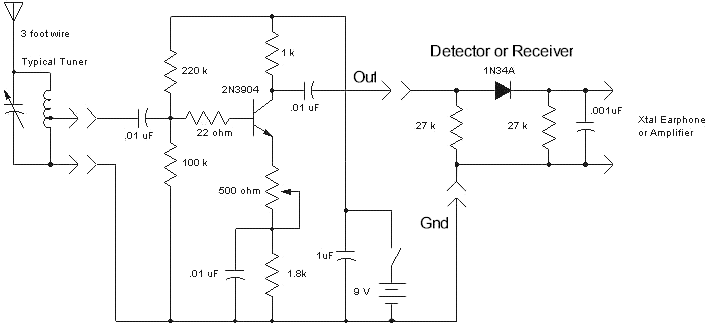
The brake a little dynamic braking circuit
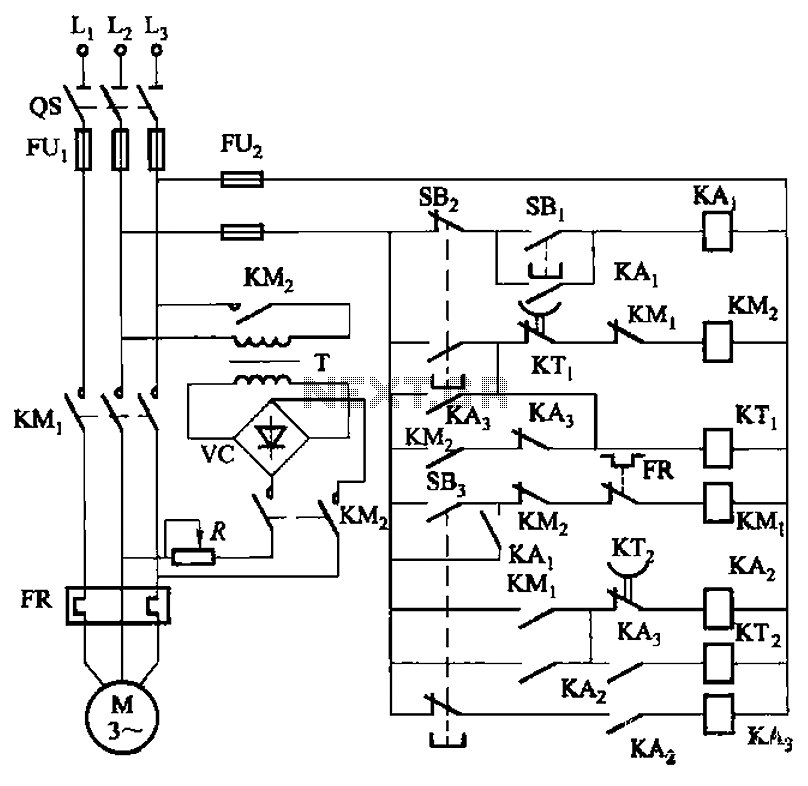
The circuit depicted in Figure 3-143 demonstrates a braking mechanism for a motor that operates effectively during normal shutdown and jog operations. The circuit includes several components, such as the start button (SBz), stop button (SBz), and jog button (SB3). The normal braking duration is determined by the relay KTi, which can be adjusted between 3 to 4 seconds. During jog control, if the time interval between jogs is less than twice the tuning time of relay KTz (adjustable between 2 to 3 seconds), the normally closed contact will remain engaged. When the SB3 jog button is pressed, the circuit opens the brake; if the interval exceeds twice the jog tuning time or the jog operation ends, the normally closed contacts of KTz will disconnect the timer, causing the relay KAz and KA3 to lose power. Consequently, the normally open contact of KA3 will disconnect, leading to the deactivation of contactor KM2 and the cessation of braking.
The circuit operates through a combination of relays and buttons that control the braking process effectively. The start button (SBz) initiates the motor operation, while the stop button (SBz) halts it. The jog button (SB3) allows for momentary operation of the motor, facilitating precise control during tasks that require brief bursts of movement.
The adjustable relay KTi defines the normal braking time, ensuring that the motor comes to a stop within a predetermined duration, enhancing safety and operational efficiency. The timing adjustments for both KTi and KTz provide flexibility in the braking response, accommodating different operational requirements based on load conditions or specific application needs.
In the jog mode, the circuit exhibits a sophisticated control mechanism. If the jog operation is performed with intervals shorter than the specified tuning time of KTz, the braking system remains engaged, allowing for rapid successive jogs without fully disengaging the brake. This feature is particularly useful in applications where precise positioning or repetitive movements are required.
Conversely, if the interval exceeds the set threshold, the system automatically transitions to a safe state by disconnecting the relay KAz and KA3, which in turn disengages the contactor KM2. This ensures that the motor is completely released from the braking action, preventing potential mechanical stress or overheating from prolonged braking engagement.
Overall, the circuit design provides a robust solution for motor control, effectively balancing between operational flexibility and safety through adjustable timing parameters and strategic relay configurations. Circuit shown in Figure 3-143. The line not only make the braking effect of the motor is in the normal shutdown, and jog through the process and has a good braking effect. Figu re, SBz the start button, SBz the stop button, SB3 jog button. Normal braking time by the time the decision relay KTi (3-4s, adjustable). When the jog control, if the time interval of less than two jog KTz tuning time (2 ~ 3s, adjustable), the delay does not turn off normally closed contact, then press the SB3 is jogging, pine SB3 that is open to the brake; if the interval is greater than twice jog KT2 tuning time, or jog end, KTz normally closed contacts disconnect timer, relay KAz, KA3 has lost power release, KA3 normally open contact disconnect and contactor KM2 missing, and released end braking.
The circuit operates through a combination of relays and buttons that control the braking process effectively. The start button (SBz) initiates the motor operation, while the stop button (SBz) halts it. The jog button (SB3) allows for momentary operation of the motor, facilitating precise control during tasks that require brief bursts of movement.
The adjustable relay KTi defines the normal braking time, ensuring that the motor comes to a stop within a predetermined duration, enhancing safety and operational efficiency. The timing adjustments for both KTi and KTz provide flexibility in the braking response, accommodating different operational requirements based on load conditions or specific application needs.
In the jog mode, the circuit exhibits a sophisticated control mechanism. If the jog operation is performed with intervals shorter than the specified tuning time of KTz, the braking system remains engaged, allowing for rapid successive jogs without fully disengaging the brake. This feature is particularly useful in applications where precise positioning or repetitive movements are required.
Conversely, if the interval exceeds the set threshold, the system automatically transitions to a safe state by disconnecting the relay KAz and KA3, which in turn disengages the contactor KM2. This ensures that the motor is completely released from the braking action, preventing potential mechanical stress or overheating from prolonged braking engagement.
Overall, the circuit design provides a robust solution for motor control, effectively balancing between operational flexibility and safety through adjustable timing parameters and strategic relay configurations. Circuit shown in Figure 3-143. The line not only make the braking effect of the motor is in the normal shutdown, and jog through the process and has a good braking effect. Figu re, SBz the start button, SBz the stop button, SB3 jog button. Normal braking time by the time the decision relay KTi (3-4s, adjustable). When the jog control, if the time interval of less than two jog KTz tuning time (2 ~ 3s, adjustable), the delay does not turn off normally closed contact, then press the SB3 is jogging, pine SB3 that is open to the brake; if the interval is greater than twice jog KT2 tuning time, or jog end, KTz normally closed contacts disconnect timer, relay KAz, KA3 has lost power release, KA3 normally open contact disconnect and contactor KM2 missing, and released end braking.
